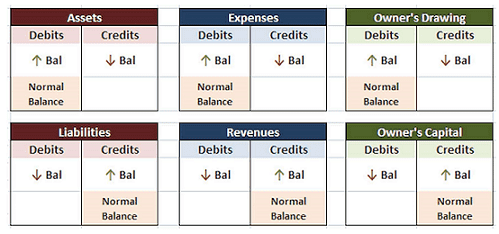Opening Balance Equity Account Explained In Detail

In conclusion, while both owner’s equity (book value) and market value are essential components in business valuation, they should be used together with other financial metrics to make informed investment decisions. Each provides a different viewpoint, helping to create a more complete evaluation of a company’s worth. Be sure to take advantage of QuickBooks Live and accounting software to help with your statement of owner’s equity and other bookkeeping tasks. Another example is a business that owns land worth $40,000, equipment worth $15,000, and cash totaling $10,000. If the business owes $10,000 to the bank and also has $5,000 in credit card debt, its total liabilities would be $15,000.

Looking To Get Started?
- A bank or other lending institution considers owner’s equity when deciding on the amount of a bank loan to grant a business.
- By effectively managing this element, companies can maintain the integrity of their financial data, which is crucial for informed decision-making and maintaining stakeholder trust.
- Financial professionals often scrutinize the Opening Balance Equity account to ensure that the balances are being correctly resolved.
- This account is not found in traditional bookkeeping, regardless of whether it’s done on paper or on any other platform like Excel.
- This should be done carefully after analyzing the chances of the loan being repaid within one year.
- Remember, owner’s equity is what remains after your business’s liabilities are subtracted from its assets.
QB is double entry accounting, so for every entry there has to be an equal entry in a second account. Normally that credit books to income or sales or something because you made money, but when setting up a bank account that amount comes from the owners. QB throws it in OBE when you create an account with a balance cause it do not know any better. If you find yourself with an opening balance equity account at the first of the month, don’t panic. Most accounting software automatically creates an Opening Balance Equity account when a new company file is set up. The account is typically used to record the opening balances of equity accounts entered during the setup process.
Impact of Business Performance
As transactions are recorded over time, the balance in Opening Balance Equity should diminish, signifying that the company’s financial activities are being accurately reflected in its financial statements. In QuickBooks, you might stumble upon the opening balance equity account, which can be confusing (especially if you’ve just started to work with the software) as you look at something you didn’t set up. While there’s nothing to worry about, you can’t ignore it since it’s a temporary opening balance equity vs owners investment account you should close. If not closed out, this account signifies an erroneous journal entry in your QuickBooks accounting records, which results in an unprofessional-looking balance sheet. Understanding opening balance equity is crucial for businesses to accurately track their financial position and ensure compliance with accounting standards. Any errors in recording this account can have a significant impact on a company’s financial statements and may result in penalties or fines.
Interpreting Owner’s Equity
So, it is important to understand the root cause of opening balance equity accounts and resolve the issue to ensure the accuracy of your balance sheets. The auditing of Opening Balance Equity accounts is a process that ensures the integrity and accuracy of a company’s financial records. Auditors examine these accounts to verify that the initial balances are correctly recorded and that subsequent allocations to other equity accounts are appropriate and in accordance with the relevant accounting framework. This examination involves a thorough review of the documentation supporting the historical balances and the rationale for any adjustments made.
How to Determine Owner’s Equity on a Balance Sheet
- The partners each contribute specific amounts to the business at the beginning or when they join.
- Using accounting software can help you figure out what is missing, or you can fill out an accounting template and see the numbers in front of you.
- Owner’s equity belongs entirely to the business owner in a simple business like a sole proprietorship because this form of business has just a single owner.
- So, the simple answer of how to calculate owner’s equity on a balance sheet is to subtract a business’ liabilities from its assets.
- Her areas of expertise include accounting system and enterprise resource planning implementations, as well as accounting business process improvement and workflow design.
- Taking out a loan to buy an asset for the company, which is listed as a liability on the balance sheet, is another approach to reducing the stockholder’s equity.
Assume an asset account, such as a checking account, with a balance of $100 is added to accounting software. Another account must be affected by $100 in order for your balance sheet to be balanced. Once the account entry process is completed for all accounts, compare the total opening balance equity to the sum of all beginning equity accounts listed in the prior account balances. If not, then review the initial account balances entry to see if there was a data entry error. The main reason for a large amount in the opening balance equity account is bank reconciliation adjustments that were not done properly. Make sure the bank statement balance transaction accounts for uncleared bank checks while completing a bank reconciliation.

- This may involve transferring amounts from the Opening Balance Equity account to the new accounts to reflect the reallocation of resources or changes in the capital structure.
- Treasury stock consists of a company’s own shares that have been repurchased from the market.
- Intuit does not endorse or approve these products and services, or the opinions of these corporations or organizations or individuals.
- An opening balance is the amount in a financial account when a new period begins, like a new year or month (it also applies to when you set up a new company file in QuickBooks).
In contrast, earnings are immediately available to the business owner in a sole proprietorship unless the owner elects to keep the money in the business. You can make journal entries to close the opening-balance equity account in various ways. Small businesses can remedy this by reconciling the oepning balance equity account to zero by entering the ending balance, marking bank-cleared items, and ensuring that all items are properly reconciled. When you have a new vendor or customer entry with value balances, then you can create an opening balance equity account. So, upon completing the setup, you might want to allocate this balance to the appropriate accounts, such as inventory assets or equity accounts.


For example, it doesn’t tell us whether a business is profitable or not, what its operating margin is, or whether it produces positive operating cash flow. Subtracting the liabilities from the assets shows that Apple shareholders have equity of $65.4 billion. In real-world situations, small business accounting software can help you calculate your owner’s equity. In addition, owner’s equity is also commonly known as “book value,” especially when referring to a company on a per-share basis. For example, if owner’s equity in a company is $10 million and there are 1 million outstanding shares of stock, you could say that the book value per share is $10.


